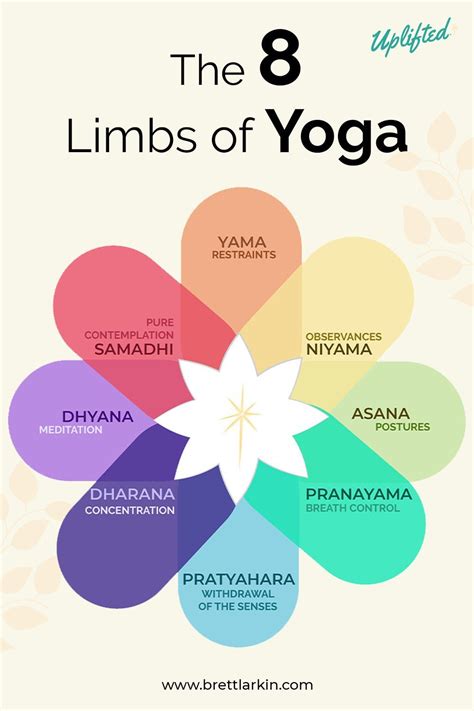Mastering the Eight Limbs of Yoga: A Comprehensive Exploration
Introduction
Yoga, an ancient practice originating in India, is far more than just physical exercise or breath control. Central to its philosophy is the Eight Limbs of Yoga, a holistic framework detailed by the sage Patanjali in the Yoga Sutras. These limbs offer practitioners a path not just toward physical health but also mental clarity, spiritual growth, and ultimate enlightenment. This article aims to provide a thorough examination of each limb, breaking down their practical applications, historical context, and their relevance in today’s fast-paced world.
Key Concepts
The eight limbs of yoga, also known as Ashtanga Yoga (meaning “eight-limbed yoga”), serve as a guide for leading a meaningful and purposeful life. These limbs are:
- Yamas – Ethical guidelines for interacting with the world.
- Niyamas – Self-discipline and spiritual observances.
- Asanas – Physical postures.
- Pranayama – Breath control.
- Pratyahara – Withdrawal of the senses.
- Dharana – Focused concentration.
- Dhyana – Meditation.
- Samadhi – Enlightenment or self-realization.
This framework covers every facet of life: from how one should interact with others to inner practices of discipline and concentration, leading to the highest state of consciousness.
Historical Context
The concept of the eight limbs can be traced back over 2,000 years to the Yoga Sutras of Patanjali. At that time, yoga was not merely a physical practice but a philosophy for living ethically and achieving spiritual liberation. Patanjali synthesized various existing traditions of yoga into a structured path that could be followed in stages. While the Yamas and Niyamas outline external and internal ethical behaviors, the other six limbs provide a roadmap for turning one’s attention inward, eventually leading to Samadhi.
Table 1: Historical Evolution of the Eight Limbs of Yoga
| Time Period | Development |
|---|---|
| 1500-500 BCE | Pre-Yoga traditions: Meditation and ascetic practices mentioned in the Vedas. |
| 400-200 BCE | Patanjali’s Yoga Sutras written; codifies the eight-limbed system. |
| 200-1200 CE | Bhakti, Hatha, and Tantra Yoga evolve, adding to the practice of the eight limbs. |
| 1900s | Revival of classical yoga during the modern yoga renaissance. |
Current State Analysis
While modern yoga is often synonymous with the physical postures (Asanas), this is just one limb of a comprehensive practice. Many practitioners are rediscovering the importance of integrating all eight limbs to achieve holistic well-being. However, the emphasis on fitness in modern Western cultures has led to an unbalanced focus on Asanas, with less attention on the other essential aspects, such as ethical living (Yamas), breath control (Pranayama), and meditation (Dhyana).
Several schools of yoga, such as Ashtanga Vinyasa Yoga and Iyengar Yoga, stress the importance of following all eight limbs, while other traditions may focus on specific limbs depending on the goals of the practitioner.
Practical Applications
Practitioners can begin incorporating the eight limbs of yoga into daily life by focusing on small, actionable steps:
- Yamas and Niyamas: Reflect on personal values, practice non-violence (Ahimsa), and commit to self-discipline through daily habits such as cleanliness (Saucha).
- Asanas: Incorporate mindful movement through a consistent yoga routine, integrating breath and posture.
- Pranayama: Begin with simple breathing exercises, such as Ujjayi or Nadi Shodhana, to cultivate control over the breath and mind.
- Pratyahara: Set aside time for sensory withdrawal through mindfulness or time away from screens.
- Dharana and Dhyana: Practice focused concentration and meditation for 5-10 minutes a day, gradually increasing the duration.
Case Studies
To illustrate the relevance of the eight limbs, let’s examine a few case studies:
| Case Study | Application of the Eight Limbs |
|---|---|
| Corporate Wellness Program | Companies are adopting yoga programs that integrate Asanas, Pranayama, and mindfulness techniques (Pratyahara and Dharana) to improve employee well-being and productivity. |
| Therapeutic Yoga for Mental Health | Yoga therapy uses the principles of the eight limbs to address anxiety and depression, with a strong focus on breath control (Pranayama) and meditation (Dhyana). |
| Sports Performance | Athletes incorporate the eight limbs into their training to enhance focus, flexibility, and mental resilience, particularly through the use of Dharana and Dhyana. |
Stakeholder Analysis
The key stakeholders in the integration of the eight limbs of yoga include:
- Yoga Practitioners: Those seeking personal growth through the eight limbs, looking for both physical and spiritual benefits.
- Yoga Teachers: Responsible for educating students about all eight limbs, not just the physical Asanas.
- Healthcare Providers: Recognize the benefits of yoga in promoting mental health, physical well-being, and overall balance.
- Corporate Leaders: Incorporating the principles of yoga in workplace wellness programs to boost employee satisfaction and productivity.
Implementation Guidelines
To fully integrate the eight limbs into daily practice, consider these strategies:
- Start with ethical guidelines: Prioritize the Yamas and Niyamas before diving into physical practices.
- Gradually build a Pranayama and meditation practice alongside physical postures.
- Incorporate yoga into all aspects of life, including diet, relationships, and work habits.
- Seek guidance from experienced yoga teachers who are knowledgeable about the holistic path of Ashtanga Yoga.
Ethical Considerations
Yoga’s principles of non-harm (Ahimsa) and truthfulness (Satya) are foundational to ethical considerations within the practice. As yoga has globalized, there is a risk of cultural appropriation and the commodification of a sacred practice. Practitioners should remain mindful of respecting the origins and deeper spiritual implications of yoga.
Limitations and Future Research
While the eight limbs provide a comprehensive guide, modern research on the benefits of yoga has largely focused on its physical aspects. Future research should expand to cover the psychological and spiritual benefits of a more integrated approach, involving all limbs of yoga. Additionally, as yoga continues to evolve in different cultural contexts, ongoing dialogue is needed about maintaining the integrity of its ancient teachings.
Expert Commentary
The eight limbs of yoga offer more than a path to physical health—they represent a blueprint for living a life of purpose, ethical behavior, and spiritual growth. As our world becomes increasingly fast-paced and stressful, the teachings of Patanjali have never been more relevant. The challenge lies in adapting these ancient practices to modern life without losing their depth. Yoga experts agree that true mastery of yoga is not limited to flexibility or physical prowess but encompasses a balance of all








